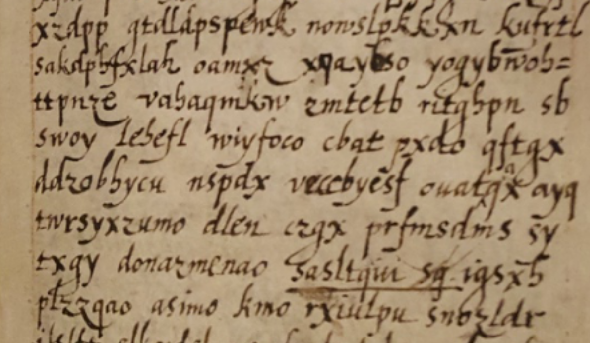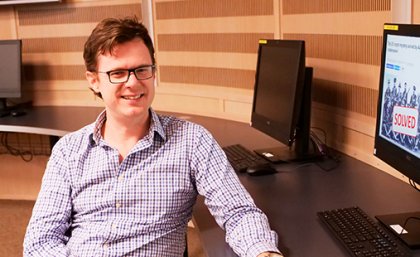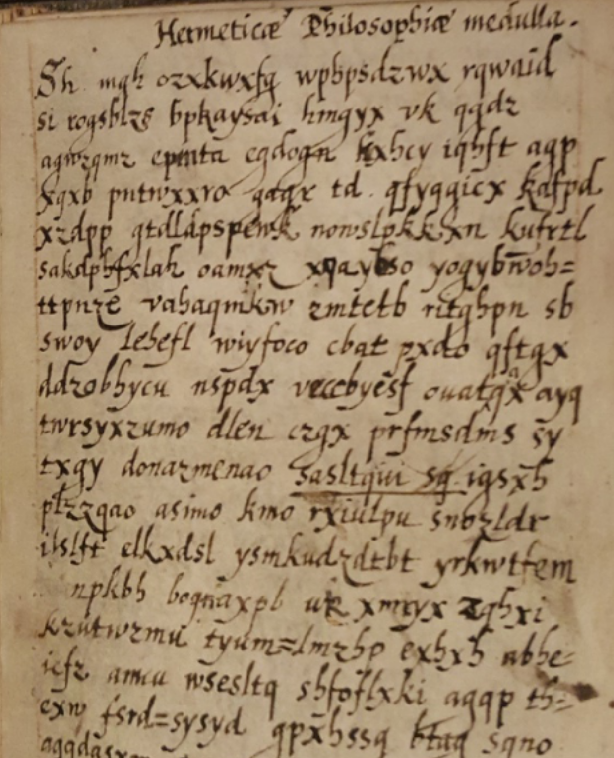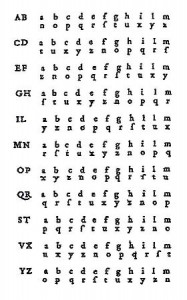The scholar John Dee, who is also associated with the Voynich manuscript, left a coded text. Richard Bean succeeded in deciphering it.
A few days ago, Elonka Dunin drew my attention to an online article describing the deciphering of a 400-year-old encrypted text. Before reading this article, I first looked to see who had written it. The first author named was Richard Bean. So it was already clear to me that it had to be a serious publication. After all, Richard Bean, a Cipherbrain reader from Australia, has been known as an excellent codebreaker for years.
Richard’s greatest successes include cracking an IRA cipher and solving the second challenge of parapyschologist Robert Thouless. I reported extensively on both decryptions, which were decidedly difficult, on Cipherbrain.
In addition to Richard, two other people were credited as authors of the article: Sarah Lang and
Megan Piorko. These names, too, sounded familiar. The two were represented with a paper on an unsolved cryptogram at this year’s HistoCrypt. This event did not take place due to Corona – only an online short version was held – but the conference proceedings were published.
It quickly became clear to me that Richard Bean had read the two authors’ HistoCrypt paper and solved the cryptogram. The purpose of the article, which all three wrote together, was to present that solution.
The cryptogram
The cryptogram in question is a manuscript by the English scholar John Dee (1527-1608), on which his son Arthur Dee (1579-1651) also worked.
John Dee is certainly known to many readers of this blog, as he possibly owned the Voynich manuscript and sold it to Emperor Rudolf II. Dee was even considered the possible author of the Voynich manuscript, but this is considered unlikely since the radiocarbon dating of the parchment to the early 15th century.
Lang and Piorko suspected that the coded message contained a recipe for the legendary Philosopher’s Stone. Among other things, this was supposed to confer the ability to produce gold from base metals.
The title of the text, “Hermeticae Philosophiae medulla”, is written in plain text, the rest is encrypted. The cryptogram is accompanied by a substitution table that looks something like this:
AB ABCDEFGHIKLN OPQRSTUWXYZM CD ABCDEFGHIKLO PQRSTUWXYZMN EF ABCDEFGHIKLP QRSTUWXYZMNO GH ABCDEFGHIKLQ RSTUWXYZMNOP IK ABCDEFGHIKLR STUWXYZMNOPQ LM ABCDEFGHIKLS TUWXYZMNOPQR NO ABCDEFGHIKLT UWXYZMNOPQRS PQ ABCDEFGHIKLU WXYZMNOPQRST RS ABCDEFGHIKLW XYZMNOPQRSTU TV ABCDEFGHIKLX YZMNOPQRSTUW WX ABCDEFGHIKLY ZMNOPQRSTUWX YZ ABCDEFGHIKLM NOPQRSTUWXYZ
This is apparently a cipher table as proposed by the Italian Giovan Battista Bellaso in the 16th century. His table consisted of eleven double lines, each preceded by two letters:
To encrypt a text (for example NOVEMBER) with the Bellaso table, you need a keyword (for example TEST):To encrypt a text (for example NOVEMBER) with the Bellaso table, you need a keyword (for example TEST):
- The first letter, N, is replaced by the double line preceded by the T, i.e. the first letter in the keyword. There we find an L above the N, and that is the corresponding ciphertext letter.
- Next, we encrypt the O. To do this, we use the double line preceded by the E. There, above the E, we find the C. The C is the first letter in the keyword. There is a C above the O.
- Now we encrypt the V. The relevant double line is the one, which is preceded by the S. There, above the U/V (the C) is written. There above the U/V (the two letters are not distinguished) the F is written.
- And so on.
Altogether, with the Bellaso table for NOVEMBER, we get the ciphertext LCFTONTC. The table contained in the Dee manuscript, it could be assumed, was to be used in the same way. However, to decrypt it, the keyword was needed.
The solution
Now Richard Bean came into play. How he solved the cryptogram is only described quite briefly in the article. This is probably because he came up with the correct solution quite quickly.
Richard assumed that Dee’s text was written in Latin. This was supported, among other things, by the Latin plain text headline. He performed several statistical analyses, but finally realized that he didn’t need them at all. In fact, the key word was on the back of the table. It consisted of 45 letters:
SIC ALTER IASON AUREA FELICI PORTABIS UELLERA COLCHO
This means: “Like a new Jason, you will carry away the Golden Fleece from the happy Colchos.”
In fact, this allowed the text to be deciphered. It can be that simple sometimes. Unfortunately, the plain text is not given in the article.
The initial hypothesis of Lang and Piorko was confirmed. The encrypted text was indeed an alchemical recipe. Unfortunately, it is not known whether the three authors were able to produce gold with it.
Even if this decryption was probably rather an easy exercise for Richard Bean, I congratulate him warmly on this success!
I hope the three authors will publish a more detailed description soon, describing the decryption in more detail and printing the plaintext. HistoCrypt 2022, to be held in Amsterdam, would be a good opportunity. The call for papers has just started.
If you want to add a comment, you need to add it to the German version here.
Follow @KlausSchmeh
Further reading: Ungelöste Verschlüsselungen in einem 300 Jahre alten Manuskript
Linkedin: https://www.linkedin.com/groups/13501820
Facebook: https://www.facebook.com/groups/763282653806483/






Letzte Kommentare